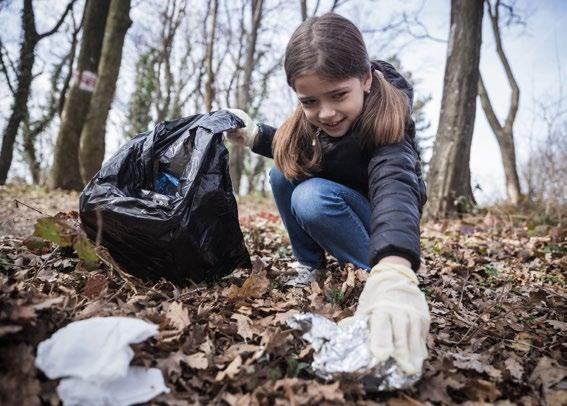30 | Winter 2021
Everything You Need to Know About Growing Raspberries MARK ANDERSON owner, Anderson’s Seed and Garden
ONE OF MY VERY FAVORITE fruits, raspberries, come in more colors than you think: red, purple, yellow, and black. They grow from perennial roots that produce mostly thorny stems called canes that grow tall and leafy the first year, then produce fruit the second summer. Some varieties, known as everbearing, can produce two crops on the same canes, one in the first fall and the second the next summer. Raspberry plants need a cold winter, cool, moist spring weather, and a gradual transition to warmer summer temperatures. They are perfect for Cache Valley! Red raspberries are most commonly grown. Yellow types are mutations of the
red varieties. Black raspberries have blueblack fruit that is firmer and have more seeds than the more common varieties. Purple raspberries are crosses between black and red raspberries. Raspberries can grow very aggressively, and if not well tended or pruned properly, they can become weedy, overgrown, invasive, and problematic. However, with some care, they can be one of the most delicious and delightful additions to any garden. Plant in an open site in full sun, or a little late afternoon shade if you live in a hot summer climate. Pick a location with good soil drainage, they do well in raised garden beds too. Raspberries like cooler temperatures during late spring
and early summer, so a heavy mulch will help maintain cooler soil and consistent moisture content. Raspberries also prefer deep, well-drained soil with a high organic matter content — the less clay the better. Sandy soils work fine, but avoid heavy clay soils if possible. Use heavy mulches to prevent weeds, keep the soil consistently moist, and maintain cooler soil temperatures. In Cache Valley, raspberries are highly susceptible to iron chlorosis. Acidifying the soil each year with sulfur will not only help correct iron deficiency, but also assist with fruit production. Early spring, after the last hard frost in cold climates, is the best time to plant. Our general rule of thumb: Only plant
Feed your family for $30 a year. We’re serious when we say you can feed your family for a year on $30-worth of vegetable seeds. If you have a 50X50 foot garden (2500 square feet), we can help you fill it with about $30-worth of vegetable seeds. All it takes is a little effort and a little know-how. Come on in before spring planting is here. We’ll provide the know-how, and you can make the effort.
Anderson’s Seed and Garden 69 West Center, Logan • 435-752-2345












